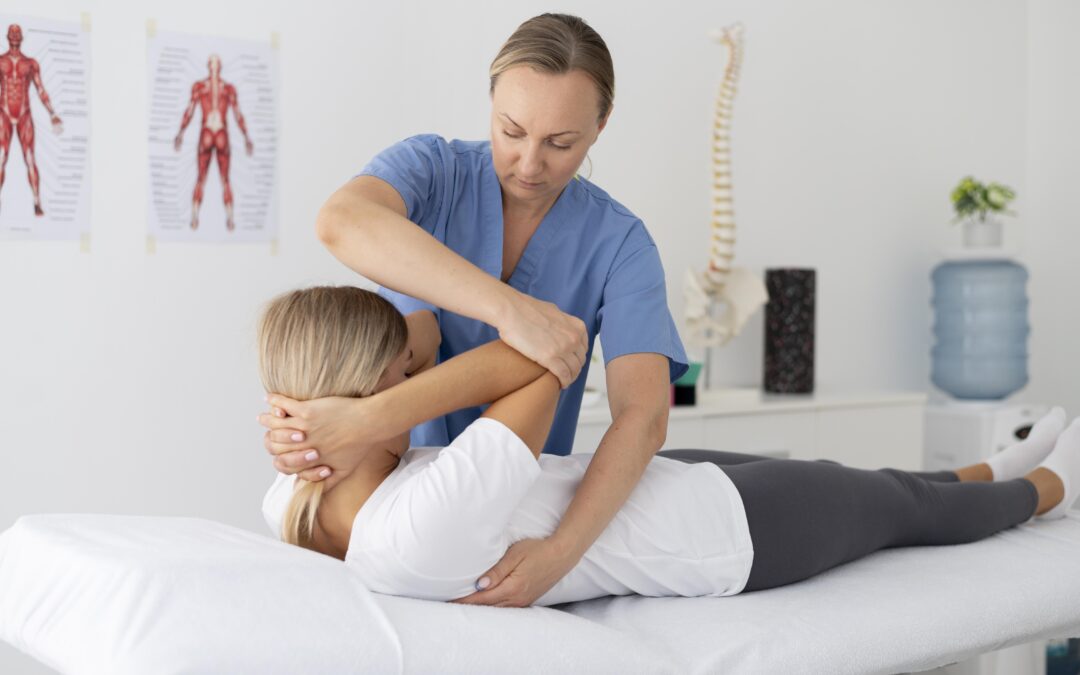Bladder pain which at time may put a stop to the most routine of daily tasks. From urgency to frequency to an all around uncomfortable sensation it can disrupt sleep, social life, and in general throw a wrench in what should be pleasurable activities. While drugs or surgeries are an option some of the best and more conservative is pelvic floor physical therapy. In the area of Westchester, you can find great help from a specialized physical therapist like Dr. Amruta Inamdar that focus in pelvic health that will give you long term relief.
Between the Dots of Bladder Pain and the Pelvic Floor.
The pelvic floor is a set of muscles and connective tissue which support the bladder, uterus, and bowel. These muscles also control continence and in coordination with abdominal and back muscles.
- When it is too tight, weak, or poor in coordination they may:
- Place extra tension on the bladder
- Irritate nerves and create painful sensations
- Reduce blood flow to pelvic tissues
- Cause urinary urgency and discomfort
This is that we see in that physical therapy for bladder pain often which the pelvic floor is brought back to health which also includes treatment of the bladder.
What is unique about Pelvic Floor Physical Therapy.
General physical therapy works on the muscles and joints all over the body, in Pelvic Floor Physical Therapy that is not the case which is why it requires advanced training. In Westchester we have specialized physical therapists that evaluate how the pelvic floor muscles, nerves, and tissues play a role in bladder symptoms. By correcting these issues pelvic floor therapy is able to reduce pain and improve bladder control naturally without the use of invasive procedures.
Benefits of Physiotherapy for Pelvic Floor in Bladder Pain.
- Relieving Muscle Tension.
Tense pelvic floor muscles may also develop pain which travels to the bladder, abdomen, or groin. We use manual techniques like myofascial release and gentle internal therapy which help to reduce the pain and also ease pressure.
- Rehabilitating Muscle Coordination.
Patients which report of pain in the bladder do not properly relax or contract their pelvic floor. In therapy we work to improve this coordination and we teach the body how to let go of tension and use the muscles as they should.
- Biofeedback and awareness.
Specialized biofeedback equipment which in the moment displays muscle activity to the patient. This which in turn improves awareness and also allows patients to practice proper relaxation at home.
- Better Mobility and Alignment.
In the hips, lower back, or pelvis we see that joint stiffness may cause bladder discomfort. A pelvic floor therapist which is a type of physical therapist uses manual techniques and stretching to restore balance and mobility.
- Bladder Training.
When it comes to nerve sensitivity which is a factor in some cases pain from even small amounts of urine may present. We see in pelvic therapy the introduction of bladder retraining which includes timed voiding, urge suppression techniques, and gradual capacity building which in turn reduces frequency and pain.
- Combining breathing and posture.
Pelvic floor health is related to core muscles and breathing. In therapy we teach postural changes and diaphragmatic breathing which in turn may relieve bladder pressure.
- Daily Living Skills Education.
Therapists also present tips on toilet use, diet, fluid intake at different times of the day, and bowel care. We see these small changes in addition to therapy as they play a role in lessening bladder irritation on a daily basis.
- Decreased use of drugs.
Through effective treatment many patients see a reduction in the number of medications they require, also some are able to do away with invasive procedures. For many this is the first time they are seeing sustained relief.
Selecting the right therapist is key. A Physical Therapist Westchester with pelvic health training, such as Dr. Inamdar, can provide the specialized care needed.
- Comprehensive assessment of pelvic anatomy and nerve pathways.
- Specialized instruments like biofeedback and internal release techniques.
- Experience of care for both men and women who have bladder or pelvic pain.
- Patient centered care which includes therapy and lifestyle support.
In that which the pelvis floor therapy is a matter of consistent practice, we see that having a local Westchester specialist on board makes for better and more effective care.
What to Expect During Therapy
A common treatment plan for bladder pain which includes:
Initial Assessment we look at bladder symptoms, medical history, posture, and muscle function. May also do an internal exam by consent.
Goal setting which may include targets like reducing the number of bathroom trips, pain reduction, or better quality sleep. Treatment also includes manual therapy, stretching, relaxation drills, and bladder retraining exercises.
Home Program Tailored exercises and daily strategies to reinforce therapy.
Most patients see improvement within a few visits but in chronic pain cases we are looking at longer terms of treatment.
Common Myths about Pelvic Floor Therapy
It is only for women. Men may also benefit from Physical Therapy for Bladder Pain, especially when pelvic pain or urinary symptoms are present.
The bladder is a main issue. Also in many cases the pelvic floor muscles are affected although symptoms may present as bladder related.
Internal therapy is a must. Also there are many external techniques which are an option.
Once pain subsides that is the end of therapy. For prevention of recurrence we do maintenance and occasional follow ups.
Real Benefits in Daily Life
- As bladder pain improves we see that patients report:
- Longer, uninterrupted sleep
- Fewer urgent trips to the restroom
- At ease at work or on the go.
- Relief from anxiety about restroom access
- Go back to activities such as exercise or intimacy free of pain.
These everyday improvements are what make pelvic floor physical therapy so valuable for bladder pain.
When to Seek Help
- In the case that you are experiencing:
- Persistent bladder pain or pressure
- Urgency or frequency without clear infection
- Pain during or after urination
- Pain with intimacy
- Limited relief from medication or procedures
Early consultation with a Pelvic Floor Specialist also produces faster and more lasting results.
A Conservative Path to Relief
Bladder pain may feel intense, but there is help. We address the pelvic floor physical therapy for bladder pain which we present as a safe and evidence based solution. In Westchester Dr. Amruta Inamdar provides tailored care to reduce pain and restore comfort.
For many people this is true of that therapy which puts back into your daily life what it may have taken away through medication or more invasive treatments. If you are at the point where bladder pain is controlling your life, setting up a visit with a pelvic health specialist may be the first step toward relief.
For more information on pelvic floor therapy Visit dramrutainamdar.com


Recent Comments